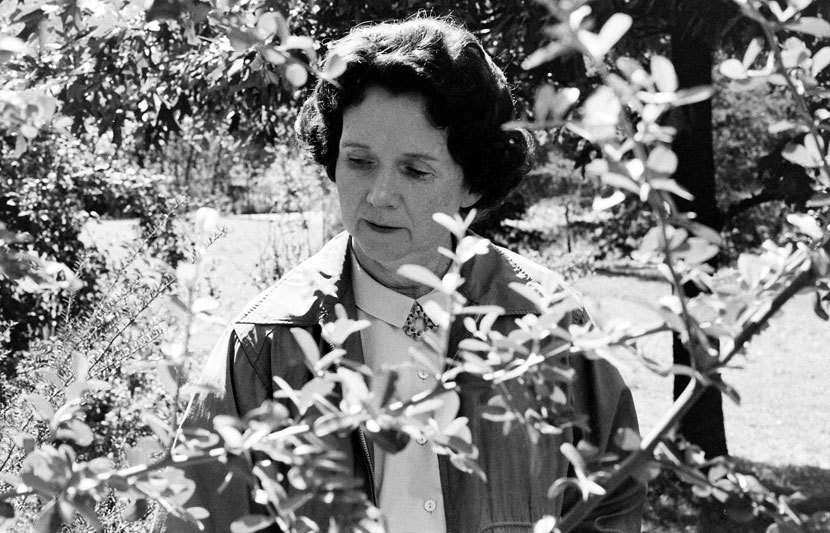
Rachel Carson was one of the pioneering modern environmentalists whose writings are credited with advancing the global environmentalist movement. A zoologist by training, Carson started as a biologist in the U.S. Bureau of Fisheries, only the second woman the bureau had ever hired. In 1951 she published her first book, The Sea Around Us, which became a bestseller. Later Carson became increasingly aware of the harmful effects of chemicals on the environment such as the insecticide DDT. This pushed her to write her most famous work, Silent Spring, which helped to catalyze the formation of America’s Environmental Protection Agency.
A fighter and trailblazer for environmental safety, Carson testified before Congress, and has become known as the "mother of modern ecology and the modern environmental movement." Various government, environmental, and academic groups have celebrated Carson's life and work. Among her many honors, she's been inducted into the National Women's Hall of Fame and was named one of the 100 most influential people of the 20th century by Time magazine. In 1980, sixteen years after her death, she was awarded the Presidential Medal of Freedom, the highest civilian honor in the U.S.
In the fall of 1929, Carson began graduate school at Johns Hopkins University, studying zoology and genetics. Much of her professional career can be traced back to the transformative experiences she had as a graduate student. It wasn’t always an easy road. Her Hopkins experience included failed experiments, financial difficulty, and long hours in the lab – but her perseverance paid off. After false starts with pit vipers and squirrels, Carson finally completed a 108-page thesis on the embryonic development of the pronephros in fish, titled, “The Development of the Pronephros during the Embryonic and Early Larval Life of the Catfish (Ictalurus punctatus)”. In the spring of 1932, she was awarded her Master of Science in Marine Zoology.
Following graduation, Carson was in no hurry to leave the Johns Hopkins community. Rather, for the next 4 years she stayed and taught summer school at her alma mater. About her experiences at Johns Hopkins, Carson later recalled, “Whatever else I may have learned there, this was the unforgettable lesson: we do not really know anything. What we think we know today is replaced by something else tomorrow."
Decades later, after ascending to the ranks of international celebrity, Carson reluctantly acceded to the pleas of the editor of the school’s alumni magazine to collaborate on a photo essay that was published as "The Sea" in the May/June 1961 issue of the Johns Hopkins Magazine. More recently, her alma mater honored her life with a 2018 campus performance titled, “Odyssey: Living History: Rachel Carson”. This performance highlighted Carson's research, personal life, and legacy, from which we all continue to benefit today.
